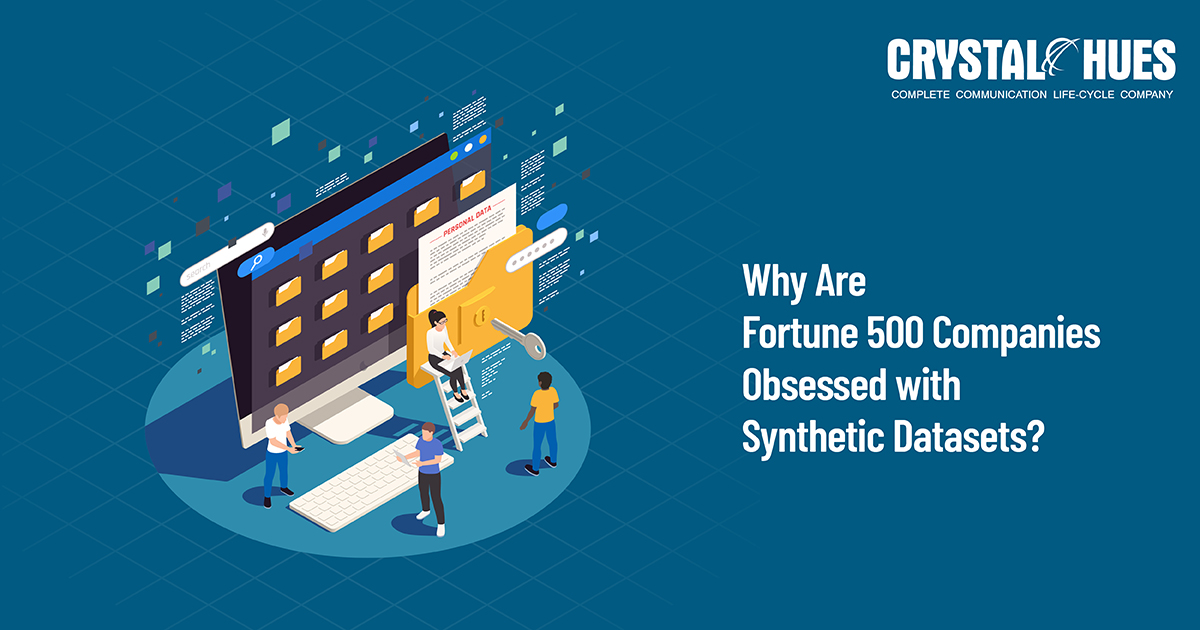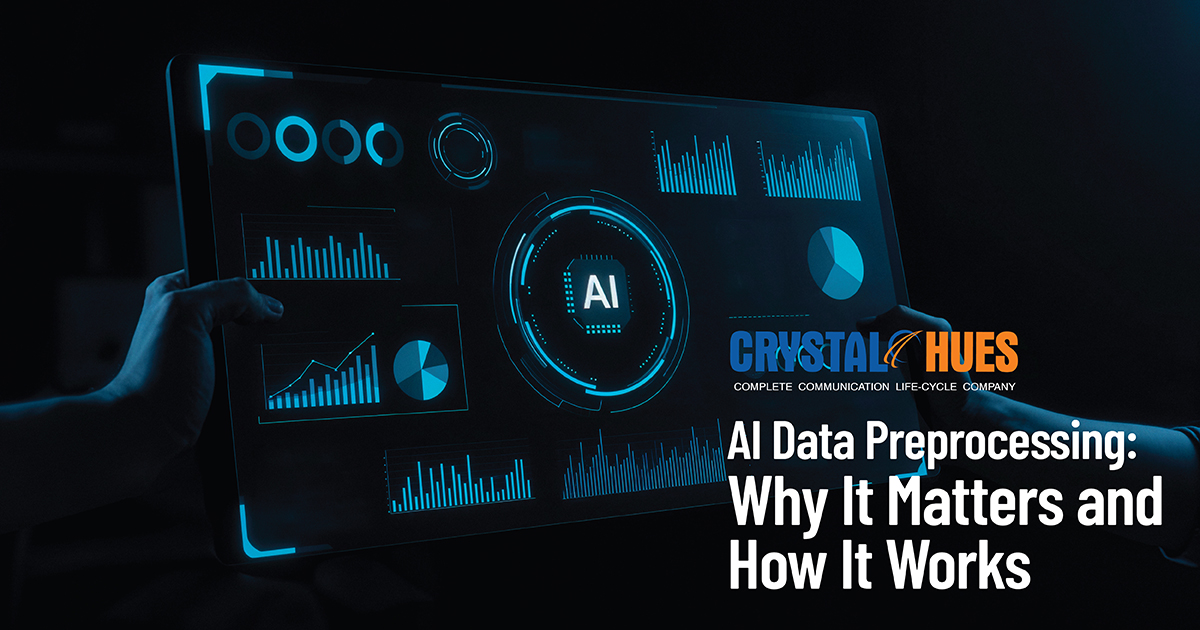
Why Are Fortune 500 Companies Obsessed with Synthetic Datasets?
If you’ve been keeping an eye on what the biggest companies are doing in AI, you’ve probably noticed a quiet obsession taking hold; synthetic data. It’s popping up in R&D labs, internal analytics teams, and even in product testing. From automotive giants training autonomous driving systems to banks simulating risk models, everyone seems to be generating their own “fake” data. But here’s the thing: it isn’t fake in the useless sense. It’s intentionally created, statistically sound, and often more valuable than the real stuff.
So why are the Fortune 500s so drawn to it? Let’s unpack this carefully.
The Real Data Problem: Why Raw Data Isn’t Enough for AI
Real-world data is messy. It’s inconsistent, incomplete, and full of personal information that companies are legally obligated to protect. If you’re a global firm handling customer data, you live in constant fear of privacy leaks or compliance fines. Add to that, the cost and time of collecting and cleaning data at scale, and it’s easy to see why “real” data isn’t always practical.
Take healthcare or finance sectors that live and die by regulation. You can’t just feed actual patient histories or banking records into an AI model without jumping through layers of consent, anonymization, and audits. Even when you do, the resulting dataset might not be large or diverse enough for reliable training.
That’s where synthetic data comes in. It sidesteps all that by creating data that mimics the statistical patterns of real data without exposing any individual’s information.
What Exactly Are Synthetic Datasets?
Algorithms generate synthetic data to produce a new dataset similar to the original dataset. For example, if you create a machine learning model that learns from prior real data, the model acquires an understanding of the rules and relationships within the data.
The model may be trained on millions of customers' transactions, wherein it learns things such as spending patterns, seasonality, and extreme values. Then, using those same rules and relationships, the model generates a totally new dataset of simulated customer transactions and spending behavior. It can then generate fresh transactions that behave like real ones, without copying any actual person’s data.
It’s not just a random noise either. Today’s synthetic data techniques are remarkably advanced. They use deep generative models like GANs (Generative Adversarial Networks) and diffusion models. These are the same kind that power realistic AI images, but applied to structured business data, medical records, sensor data, or even video.
Why Are Fortune 500 Companies Turning to Synthetic Data?
Control, Scale, and Speed: How Synthetic Data Accelerates AI Projects
Synthetic data gives companies control.
Real-world data is limited by what actually happened. Synthetic data lets you simulate what could happen.
If you’re building fraud detection systems, you can’t wait around for rare fraud patterns to occur in real life. You can generate them instead. If you’re testing a self-driving car, you can simulate millions of rare traffic situations that might take decades to encounter naturally. This control translates directly into speed.
Fortune 500 firms live by timelines. They can’t afford to stall an AI project because they’re waiting for data approval or collection. Synthetic datasets can be created in days, customized endlessly, and expanded whenever the model needs to be retrained.
Then there’s the cost. Collecting and labeling massive datasets manually is expensive. Generating them synthetically can be far cheaper once the pipeline is in place.
Privacy Without the Pain: Safe Data Handling for Big Companies
Every large company today is under pressure to handle data responsibly. Regulations like GDPR and CCPA have made it clear that sloppy data practices can lead to massive fines and reputation damage.
Synthetic data is attractive because it avoids storing or sharing real personal data altogether. Since synthetic records don’t belong to real people, companies can test, share, and analyze freely without violating privacy laws. This makes cross-department collaboration easier — something that’s often blocked by compliance bottlenecks in big organizations.
Of course, synthetic data isn’t a total privacy cure-all. If not generated properly, it can still leak subtle patterns from the original data. But with proper differential privacy techniques, Fortune 500 companies are getting closer to achieving both privacy and performance.
A Safe Testing Ground: Experiment Freely with Synthetic Data
One of the less talked-about benefits is how synthetic datasets help large firms experiment safely. Imagine a retail company testing dynamic pricing models. Doing it on real customer data could lead to errors that upset buyers or distort revenue. Synthetic approaches provide an extremely safe and isolated test environment; you can test the model, make some adjustments, retest the model, and continue to evaluate before deploying production systems.
The same logic would apply in industries like aviation or manufacturing, where testing AI systems directly on production data presents risks that could potentially be dangerous. Using synthetic environments allows AI systems to learn with complete safety prior to being used in the real world.
The Data Diversity Advantage: Reducing Bias and Increasing Coverage
Another reason synthetic data has become a corporate obsession is diversity. Real data tends to be biased — often unintentionally. For example, if a hiring algorithm were trained solely on a past employee population, it might learn to be biased toward specific demographics. Synthetic data could help with that by producing fairer, more representative datasets that do not reproduce historical bias.
This is incredibly important for global companies with business operations across markets, as they could model consumer behavior in regions with limited data or address areas in datasets where certain populations have been underrepresented.
When Synthetic Data Falls Short: Limitations You Should Know
It’s not perfect. Synthetic data relies on real data. And the models that produce synthetic data are only as strong. If the source data contains biases or missing information, those biases will carry over. And if the generative model that produced the synthetic data was poorly trained, the synthetic data may miss specific relationships within a real-world system.
That’s why most large companies don’t replace real data entirely. They blend the two; using synthetic data to augment, not substitute. It’s a practical middle ground that keeps innovation moving without losing touch with reality.
So, Why the Obsession?
Because synthetic data hits the Fortune 500 sweet spot: it’s scalable, safe, and efficient. It lets them innovate fast without tripping over compliance or cost barriers. It turns data from a liability into a renewable resource. And in a world where every company is racing to build better AI, that’s a massive competitive edge.
For these firms, synthetic datasets aren’t just a technical choice. They’re strategic ones. They change how organizations think about data itself: not as something to hoard, but something to create, customize, and control.
In short, the obsession makes sense. Real-world data gave these companies insight into what is. And synthetic data lets them explore what could be. And in the race to build smarter systems, that difference is everything.
You have reached the end. Thank you for reading our blog. We hope you found it informative and useful. For more such content on to help you stay informed on AI and our language services, you can check out our blog page here.
If you have any feedback or suggestions on what you’d like for us to cover or how we can make our blogs more useful, you can reach us through our LinkedIn inbox or email us at digital@crystalhues.in.



